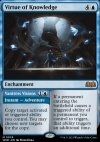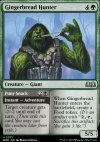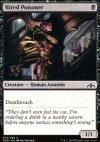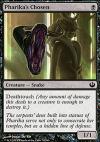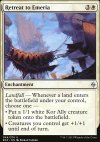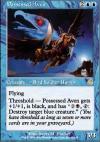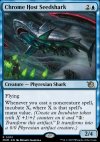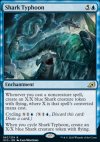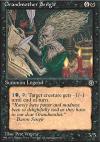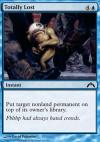|

Archive des News/Articles |
Forum Gazette |
Artgame |
MWS |
MV wiki |
Contact |
Storyline
MAJ Lorwyn éclipsé (17/12)
|
Anecdotes
Général |
OIK |
Échanges |
Règles |
Tournois |
Rumeurs |
Decks |
Vintage |
Legacy |
Modern |
Pioneer |
Standard |
Peasant |
Commander |
Tiny Leaders |
Explorer |
MTG Arena

MV anecdotes
| 4868 anecdotes trouvées |   |
Les chevaliers Syr Alin, the Lion's Claw, Syr Elenora, the Discerning, Syr Konrad, the Grim, Syr Carah, the Bold et Syr Faren, the Hengehammer, du cycle de l'édition Throne of Eldraine (voir cette anecdote), apparaissent respectivement sur les illustrations des cartes Virtue of Loyalty, Virtue of Knowledge, Virtue of Persistence, Virtue of Courage et Virtue of Strength, du cycle de l'édition Wilds of Eldraine (voir cette anecdote).
Source : Chris Mooney 🏳️‍⚧️ (@ChrisKMooney), le 6:27 PM · Aug 19, 2023 a écrit :
Though the Virtues changed many times, the core concept came from vision design. We wanted a high profile way to represent the old courts of the realm. If you look closely, you might be able to recognize the figures that appear in each of their arts 👀
#wotcstaff #MTGEldraine
***
Chris Mooney 🏳️‍⚧️ (@ChrisKMooney) · Aug 19, 2023
Each one is different!
Maybe it'll be easier once you have all five 🤔
***
Gustavo W. Lopes (@MTGRUG) · Aug 19, 2023
Oh, the 5 uncommon knoghts
#wotcstaff #MTGEldraine
***
Chris Mooney 🏳️‍⚧️ (@ChrisKMooney) · Aug 19, 2023
Each one is different!
Maybe it'll be easier once you have all five 🤔
***
Gustavo W. Lopes (@MTGRUG) · Aug 19, 2023
Oh, the 5 uncommon knoghts
Les cinq cartes Virtue of Loyalty, Virtue of Knowledge, Virtue of Persistence, Virtue of Courage et Virtue of Strength, de l'édition Wilds of Eldraine et illustrées par Piotr Dura, forment un cycle appelé "Virtue" d'enchantements avec la mécanique d'Aventurier.
Le nom de chacun des sorts d'aventure fait référence au nom du terrain correspondant du cycle appelé "Castle" de l'édition Throne of Eldraine (voir cette anecdote).
Source (Virtue of Loyalty/Virtue of Knowledge/Virtue of Persistence/Virtue of Courage/Virtue of Strength - "[...] With Roles and bargain, Wilds of Eldraine had an enchantment theme, so we thought it would be cool to do a cycle of Adventures that went on global enchantments. [...] What if our five Adventure enchantments represented the five virtues of the courts? [...]")
Le nom de chacun des sorts d'aventure fait référence au nom du terrain correspondant du cycle appelé "Castle" de l'édition Throne of Eldraine (voir cette anecdote).
Source (Virtue of Loyalty/Virtue of Knowledge/Virtue of Persistence/Virtue of Courage/Virtue of Strength - "[...] With Roles and bargain, Wilds of Eldraine had an enchantment theme, so we thought it would be cool to do a cycle of Adventures that went on global enchantments. [...] What if our five Adventure enchantments represented the five virtues of the courts? [...]")
Les dix cartes Twining Twins, Cruel Somnophage, Decadent Dragon, Questing Druid, Pollen-Shield Hare, Devouring Sugarmaw, Scalding Viper, Mosswood Dreadknight, Heartflame Duelist et Elusive Otter, de l'édition Wilds of Eldraine, forment un cycle de créatures rares avec la mécanique d'Aventurier correspondant aux dix paires de couleurs, alliées et ennemies.
Les dix cartes Threadbind Clique, Spellscorn Coven, Callous Sell-Sword, Picnic Ruiner, Woodland Acolyte, Shrouded Shepherd, Frolicking Familiar, Gingerbread Hunter, Imodane's Recruiter et Tempest Hart, de l'édition Wilds of Eldraine, forment un cycle de créatures peu communes avec la mécanique d'Aventurier correspondant aux dix paires de couleurs, alliées et ennemies.
Le type de créature Souris a été spécifiquement introduit pour les jetons Mouse créés par la carte Enchanted Carriage, de l'édition Throne of Eldraine. Les développeurs ont envisagé des Rats, et Mark Rosewater a même proposé des Écureuils, mais ils ont fini par en rester aux Souris, qui collaient plus au thème.
La carte Canyon Jerboa, de l'édition Zendikar Rising, est la première carte non-jeton portant le type Souris. Celle-ci a été depuis rejointe par Armory Mice, Cheeky House-Mouse, Raging Battle Mouse et Pests of Honor, de l'édition Wilds of Eldraine, ainsi que les mêmes jetons créés par Three Blind Mice.
Source 1 (new creature types - Mouse) - Source 2 (Armory Mice, Cheeky House-Mouse, Raging Battle Mouse, and Three Blind Mice - "The first Mouse card was Canyon Jerboa from Zendikar Rising.") - Search ~ Type : Mouse
La carte Canyon Jerboa, de l'édition Zendikar Rising, est la première carte non-jeton portant le type Souris. Celle-ci a été depuis rejointe par Armory Mice, Cheeky House-Mouse, Raging Battle Mouse et Pests of Honor, de l'édition Wilds of Eldraine, ainsi que les mêmes jetons créés par Three Blind Mice.
Source 1 (new creature types - Mouse) - Source 2 (Armory Mice, Cheeky House-Mouse, Raging Battle Mouse, and Three Blind Mice - "The first Mouse card was Canyon Jerboa from Zendikar Rising.") - Search ~ Type : Mouse
La carte Gingerbrute, de l'édition Throne of Eldraine, ainsi que les cartes Tough Cookie, Gingerbread Hunter et Syr Ginger, the Meal Ender, de l'édition Wilds of Eldraine, et enfin la carte Brenard, Ginger Sculptor, de l'édition Wilds of Eldraine Commander Decks, sont des références au conte : Le petit bonhomme en pain d'épices et ses différentes variantes.
En particulier, la capacité de Célérité de la Gingerbrute et celle la rendant difficile à bloquer rappellent la manière dont, dans ces contes, le bonhomme en pain d'épices échappe aux divers poursuivants souhaitant le manger.
Dans ces contes, le bonhomme en pain d'épices finit le plus souvent dévoré par un renard. Pourtant, le Renard, paru en même temps dans l'édition Throne of Eldraine, ne dispose pas de la Célérité et serait donc, au contraire, dans l'impossibilité de croquer la Gingerbrute !
Source 1 (Gingerbrute - "This was one of the very first cards put into the file. [...] I really believed it was the kind of top-down design that was going to give Throne of Eldraine its feel.") - Source 2 (Candy Trail and Three Bowls of Porridge - "In Throne of Eldraine, we made a card called Gingerbrute , a top-down design of The Gingerbread Man.") - Source 3 (Syr Ginger, the Meal Ender)
En particulier, la capacité de Célérité de la Gingerbrute et celle la rendant difficile à bloquer rappellent la manière dont, dans ces contes, le bonhomme en pain d'épices échappe aux divers poursuivants souhaitant le manger.
Dans ces contes, le bonhomme en pain d'épices finit le plus souvent dévoré par un renard. Pourtant, le Renard, paru en même temps dans l'édition Throne of Eldraine, ne dispose pas de la Célérité et serait donc, au contraire, dans l'impossibilité de croquer la Gingerbrute !
Source 1 (Gingerbrute - "This was one of the very first cards put into the file. [...] I really believed it was the kind of top-down design that was going to give Throne of Eldraine its feel.") - Source 2 (Candy Trail and Three Bowls of Porridge - "In Throne of Eldraine, we made a card called Gingerbrute , a top-down design of The Gingerbread Man.") - Source 3 (Syr Ginger, the Meal Ender)
Les cartes Ankle Biter, Fang of Shigeki, Tajuru Blightblade et Moss Viper sont des réimpressions fonctionnelles de Sedge Scorpion, à part pour le type de créature.
Les cartes Gilacorn, Hired Poisoner et Pharika's Chosen sont des réimpressions fonctionnelles de Typhoid Rats, à part pour le type de créature.
La carte Sedge Scorpion est la version "color-shifted" de Typhoid Rats.
Chacune a fait l'objet de réimpressions fonctionnelles (voir respectivement cette anecdote et celle-ci).
Chacune a fait l'objet de réimpressions fonctionnelles (voir respectivement cette anecdote et celle-ci).
Les cinq cartes Retreat to Emeria, Retreat to Coralhelm, Retreat to Hagra, Retreat to Valakut et Retreat to Kazandu, de l'édition Battle for Zendikar et illustrées par Kieran Yanner, forment un cycle appelé "Retreat".
Les quatre cartes Possessed Nomad, Possessed Aven, Possessed Barbarian et Possessed Centaur, de l'édition Torment, forment un cycle appelé "Possessed".
Les cartes Opal Caryatid, Opal Gargoyle, Opal Champion, Opal Acrolith, Opal Archangel et Opal Titan forment un cycle vertical (cartes d'une même couleur mais avec une rareté différente) du bloc des éditions Urza's Saga, Urza's Legacy et Urza's Destiny, ayant en commun le fait d'être un enchantement qui devient une créature lorsqu'une condition est remplie, en l'espèce lorsqu'un adversaire lance un sort de créature.
La carte Opal Avenger complète ce cycle, avec une condition différente.
Des cycles similaires existent au sein du même bloc (voir cette anecdote, celle-ci et celle-là).
La carte Opal Avenger complète ce cycle, avec une condition différente.
Des cycles similaires existent au sein du même bloc (voir cette anecdote, celle-ci et celle-là).
Les cartes Veil of Birds, Veiled Serpent, Veiled Apparition et Veiled Sentry forment un cycle vertical (cartes d'une même couleur mais avec une rareté différente) du bloc des éditions Urza's Saga, Urza's Legacy et Urza's Destiny, ayant en commun le fait d'être un enchantement qui devient une créature lorsqu'une condition est remplie, en l'espèce lorsqu'un adversaire lance un sort.
La carte Veiled Crocodile complète ce cycle, avec une condition différente.
Des cycles similaires existent au sein du même bloc (voir cette anecdote, celle-ci et celle-là).
La carte Veiled Crocodile complète ce cycle, avec une condition différente.
Des cycles similaires existent au sein du même bloc (voir cette anecdote, celle-ci et celle-là).
Les cartes Hidden Spider, Hidden Ancients, Hidden Guerrillas, Hidden Predators, Hidden Stag et Hidden Gibbons forment un cycle vertical (cartes d'une même couleur mais avec une rareté différente) du bloc des éditions Urza's Saga, Urza's Legacy et Urza's Destiny, ayant en commun le fait d'être un enchantement qui devient une créature lorsqu'une condition est remplie, variant d'une carte à l'autre, à la différence des cycles similaires qui existent au sein du même bloc (voir cette anecdote, celle-ci et celle-là).
La carte Sylvan Anthem cache plusieurs créatures sous forme de feuilles. On peut notamment distinguer, de gauche à droite : une dryade, un elfe, une hydre, un éléphant, un centaure, un ours, un lapin, un élan, une sorte d'élémental tel que Vengeful Firebrand ou Flamekin Harbinger...
Source : Incorrect MTG Quotes (@incorrect_mtg), le 3:20 PM · May 26, 2021 a écrit :
Sylvan Anthem, part 2:
Citation :
Mário Paredes (@mistercimba89) · May 26, 2021
Replying to @incorrect_mtg
Also the art seems to reference classical green creatures, each of the leaves is a different creature. You can see a Dryad, Hydra, Elephant, Wolf, Elk, etc
Replying to @incorrect_mtg
Also the art seems to reference classical green creatures, each of the leaves is a different creature. You can see a Dryad, Hydra, Elephant, Wolf, Elk, etc
La carte Sylvan Anthem est une référence à Crusade de par son coût de mana et son effet, à la nuance qu'elle limite le bonus qu'elle offre aux créatures de son contrôleur ; elle en est quasiment la version "color-shifted".
Sur l'illustration de Ricardo Bessa pour la carte Bearscape, de l'édition Secret Lair - Pride Across the Multiverse, on peut distinguer deux nuages en forme d'ours, en référence au nom de la carte et au Bearscape de l'édition Odyssey, illustré par Heather Hudson, qui lui, représente tout un paysage fait d'ours.
La carte Sunfall est une référence à Phyrexian Rebirth de par son effet, ainsi qu'à Heliod, the Radiant Dawn / Heliod, the Warped Eclipse et Starfall de par son nom et la référence au Plan de Theros.
La carte Chrome Host Seedshark est une référence à Shark Typhoon de par son type de créature, sa capacité statique et sa capacité déclenchée.
La citation de Grandmother Ravi Sengir fait référence au nom de la carte Apocalypse Chime et à la citation de cette même Grandmother Sengir sur celle-ci.
La carte Rampaging Raptor est une référence à Questing Beast de par son coût de mana, ses force et endurance, ainsi que sa capacité déclenchée.
La carte Fertilid's Favor est une référence à Fertilid de par son nom, son effet et enfin son illustration.
La carte Botanical Brawler est une référence à Stony Strength de par la composition de son illustration.
Le texte d'ambiance de la carte Jeering Homunculus est une référence à celui de Totally Lost, de même que la composition de son illustration ; les deux homoncules ne sont cependant pas les mêmes.
| 4868 anecdotes trouvées |   |





 Avatar: the Last Airbender
Avatar: the Last Airbender Spider-Man / Omenpaths
Spider-Man / Omenpaths Edge of Eternities
Edge of Eternities Final Fantasy
Final Fantasy Tarkir: Dragonstorm
Tarkir: Dragonstorm Aetherdrift
Aetherdrift Foundations
Foundations


